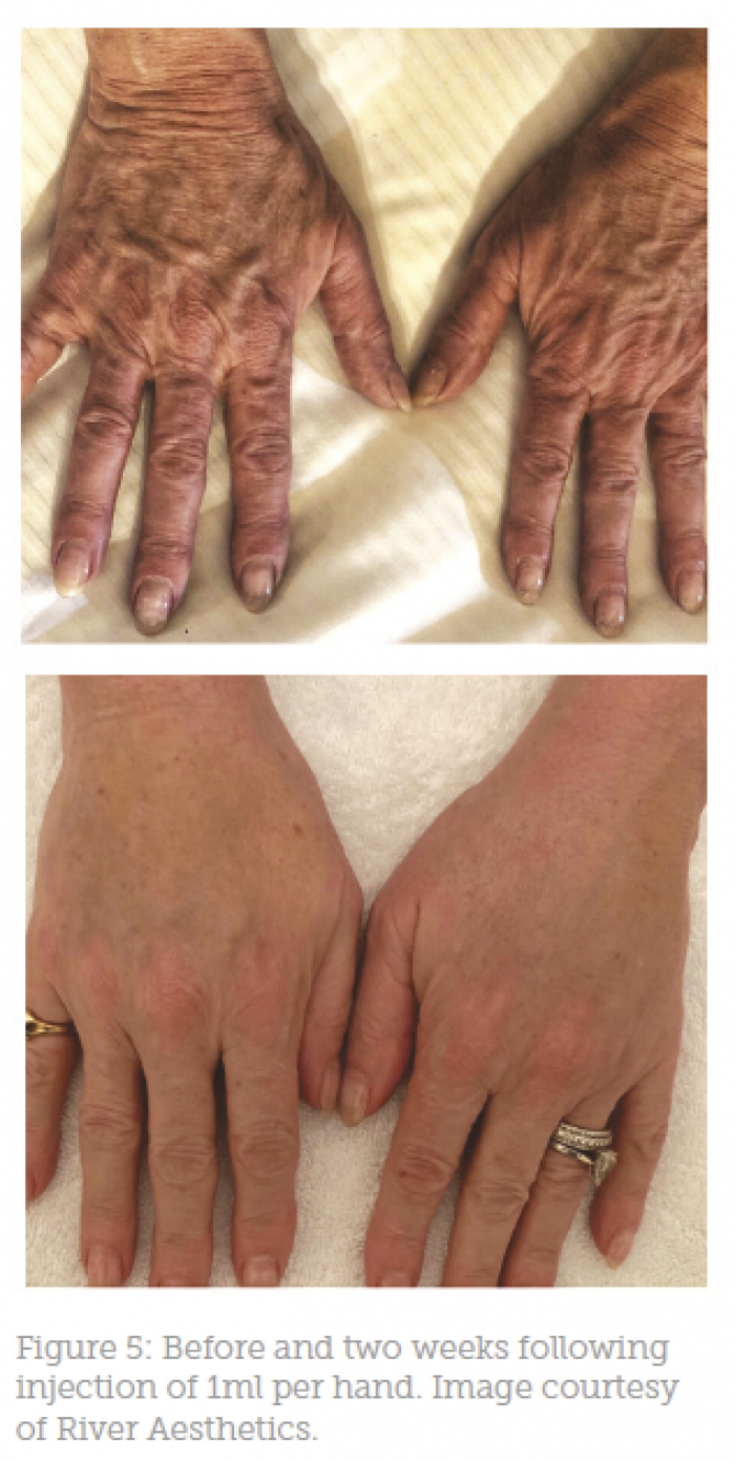The popularity of procedures aimed at rejuvenating the hands is constantly growing, since this part of the body, regardless of the season, is constantly in sight and gives out the age of the patient.
The signs of aging in this area can be eliminated with the help of contouring, laser therapy, sclerotherapy, lipofilling and other anti-age procedures.
In this article estet-portal.com Dr. Charlotte Woodward and Victoria Manning will talk about hand rejuvenation with collagen-stimulating dermal fillers.
Anatomical features and signs of aging of the hands
The success of injection rejuvenation of the hands largely depends on the knowledge of the specialist in the field of anatomy, especially the location of the vessels in this area.
It is important to remember that the thickness of the epidermis and dermis of the hands is less than in many areas of the face. Since the back of the hands is characterized by the presence of a small amount of subcutaneous fat, even a slight decrease in the amount of collagen and elastin leads to noticeable changes in this area.
Bidic et al. identified three separate layers on the back of the hands:
• dorsal superficial (between the dermis and the superficial dorsal fascia – target for filler injections);
• dorsal intermediate (contains sensory nerves and dorsal veins);
• dorsal deep (it contains the extensor tendons).
Injections of dermal fillers into the surface layer make it possible to mask the veins and tendons. This plane does not contain important anatomical structures, and therefore is safe for injections – optimal volumization and a natural result without the risk of complications. The thinness of the skin in this area necessitates a careful choice of technique for introducing the product.
It is important to remind patients to apply SPF 30 sunscreen to exposed areas of the body, including the backs of the hands.
Hand aging is characterized by a loss of dermal and subcutaneous volume, followed by the appearance of wrinkles. Visualization of tendons and veins, age spots, deterioration of skin texture, loss of elasticity and thinning of epidermal, dermal and subcutaneous structures, as well as atrophy of subcutaneous fat – age-related changes that give out the age of the patient.
Age can be hidden: hand rejuvenation with fillers
The speed and degree of aging of the hands depends on both genetic predisposition and the impact of external factors – smoking, alcohol consumption, sun exposure. It is important to remind patients to apply SPF 30 sunscreen to exposed areas of the body, including the backs of the hands.
Case Study: Hand Rejuvenation with Polycaprolactone Dermal Fillers
A 63-year-old female patient presented to the clinic with complaints of hand aging, in particular tendon imaging. During the examination, the degree of age-related changes on the Busso scale was estimated at 3 points. Correction with fillers was suggested to the patient due to the absence of a history of autoimmune diseases and allergic reactions to polycaprolactone.
Since the main goal of hand rejuvenation is to replenish volume and reduce the degree of visualization of veins and tendons, the authors choose fillers based on polycaprolactone – they volumize, smooth the skin, and also stimulate collagen synthesis.
Three-point lifting technique with fillers for full face rejuvenation

Before and 2 weeks after the correction of the back of the hands 2 ml of Ellansé (photo by River Aesthetic)
A 25 gauge blunt cannula was inserted subcutaneously into the plane of the superficial fat pads. The choice of instrument is due to minimizing tissue damage and reducing the risk of intravascular injection of the drug. The injection point (located just distal to the carpal crease) was created using a 23-gauge needle after prior anesthesia with lidocaine. A cannula was inserted through the created point.
The filler was inserted just above the fascial plane, parallel between the ligaments. The optimal plane for the introduction of the drug – below the surface of the dermis. In order to avoid the appearance of bumps on the surface of the skin, it is recommended to use a linear technique. The drug is administered in the amount of 0.1 ml per line.
The total amount of filler depends on the degree of volume loss and is approximately 0.5-1 ml per brush. For the correction of this zone, a long-acting plastic filler is suitable, which is able to withstand the motor load characteristic of the hands.
In the described case, the patient underwent correction of the back of the hands with 2 ml of Ellansé (1 ml per brush).
Injections of dermal fillers into the superficial layer of the back of the hands can mask the veins and tendons. This plane does not contain important anatomical structures, and therefore is safe for injections – optimal volumization and natural results without the risk of complications.
When using collagen-stimulating fillers, especially when working with younger patients, it is important to take into account further neocollagenesis to avoid overcorrection. After the injection of the filler, a massage is performed on the treated area to evenly distribute the drug.
Recommendations after the procedure:
• good hand hygiene;
• antihistamines in case of edema.
At the time of the follow-up visit, which was scheduled 2 weeks later, the patient was completely satisfied with the result, as well as 3 months after the correction, when the effect of collagen stimulation was maximum.
Adapted from Aesthetics







Add a comment